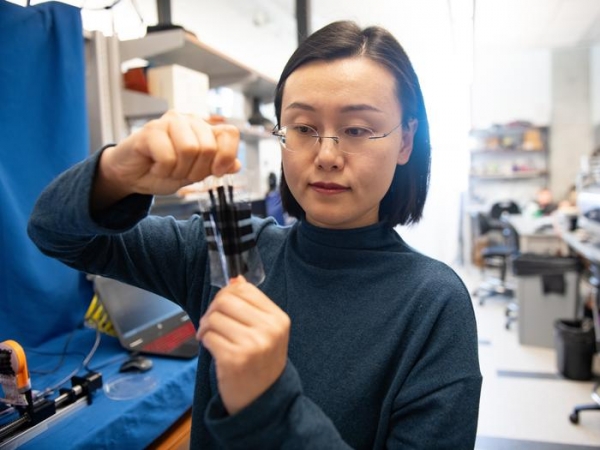A first-ever stretchy electronic skin could equip robots and other devices with the same softness and touch sensitivity as human skin, opening up new possibilities to perform tasks that require a great deal of precision and control of force.
A first-ever stretchy electronic skin could equip robots and other devices with the same softness and touch sensitivity as human skin, opening up new possibilities to perform tasks that require a great deal of precision and control of force.
The new stretchable e-skin, developed by researchers at The University of Texas at Austin, solves a major bottleneck in the emerging technology. Existing e-skin technology loses sensing accuracy as the material stretches, but that is not the case with this new version.
“Much like human skin has to stretch and bend to accommodate our movements, so too does e-skin,” said Nanshu Lu, a professor in the Cockrell School of Engineering’s Department of Aerospace Engineering and Engineering Mechanics who led the project. “No matter how much our e-skin stretches, the pressure response doesn’t change, and that is a significant achievement.”
Read more at University of Texas at Austin
Image: Aerospace engineering professor Nanshu Lu with the stretchable e-skin she created. (Credit: The University of Texas at Austin)




